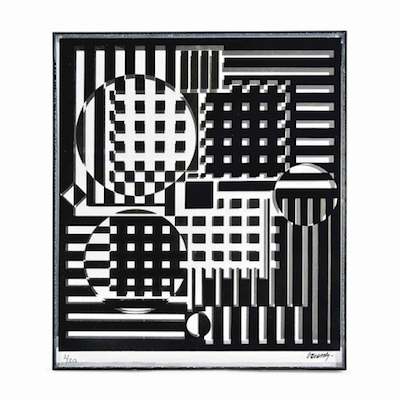
Details
Artist
Styles
3d construction // SBST 2838 by Ludwig Wilding is a three-dimensional object created in 2000, reflecting his expertise in optical art. This work features a complex, repetitive pattern of black and white lines that create an illusion of depth and movement. The composition, comprised of swirling, circular shapes that appear to pulse and shift, engages the viewer’s eye, producing a dynamic, almost vibrating effect. Wilding, known for his kinetic and optical illusions, challenges visual perception, making his pieces interactive as they shift depending on the viewer’s angle. The precision of this construction, part of a limited edition of 100, highlights Wilding's fascination with the boundaries of visual perception and reality, making it a captivating piece in the realm of optical art.
SBST 2838, 2000
form
Medium
Size
28 x 28 X 6 cm
- Inches
- Centimeters
Edition
Price
- USD
- EUR
- GBP
Details
Artist
Styles
3d construction // SBST 2838 by Ludwig Wilding is a three-dimensional object created in 2000, reflecting his expertise in optical art. This work features a complex, repetitive pattern of black and white lines that create an illusion of depth and movement. The composition, comprised of swirling, circular shapes that appear to pulse and shift, engages the viewer’s eye, producing a dynamic, almost vibrating effect. Wilding, known for his kinetic and optical illusions, challenges visual perception, making his pieces interactive as they shift depending on the viewer’s angle. The precision of this construction, part of a limited edition of 100, highlights Wilding's fascination with the boundaries of visual perception and reality, making it a captivating piece in the realm of optical art.
- Recently Added
- Price (low-high )
- Price (high-low )
- Year (low-high )
- Year (high-low )
What is Op Art?
Op Art is a visual art style that uses optical illusions to create the impression of movement, vibrating patterns, flashing, or hidden images. The works are typically abstract, with many well-known pieces in black and white. The roots of Op Art can be traced back to earlier movements like Futurism, Constructivism, Dada, and Neo-Impressionism, particularly in their use of color effects and graphic design.


















